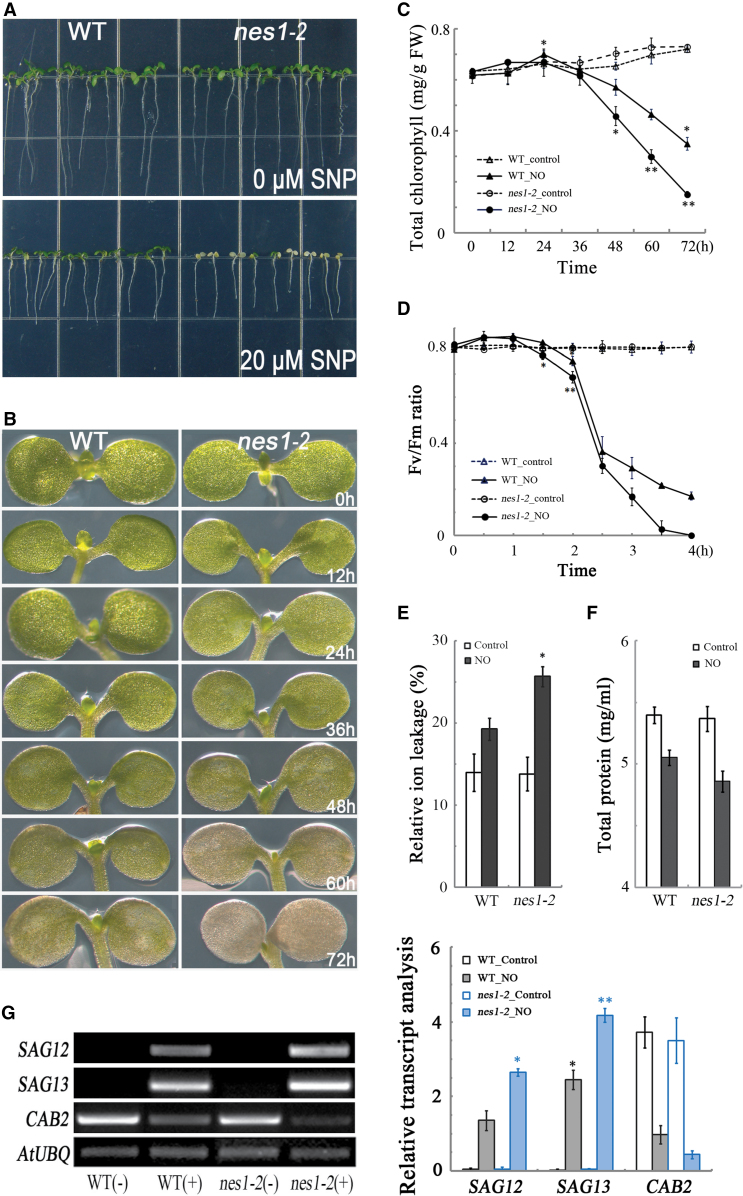Fig. 1.
Nitric oxide-induced cotyledon senescence is accelerated in nes1-2. (A) Phenotypic comparison of 5-day-old wild type (WT) and nes1-2 treated as indicated for 72h. (B) Higher magnification images of plants treated as in (A) with 20 μM nitroprusside. (C) Chlorophyll content as a function of time for plants treated as in (A). Data are the means of 20 seedlings ±SE with four replicates for each time point. (D) Chlorophyll fluorescence parameter (F v/F m) for plants treated with nitric oxide. Data are means of five seedlings ±SE, with four replicates for each time point. (E) Protein content of plans treated as in (A) with 20 μM nitroprusside for 24h. (F) Electrolyte leakage of plants treated as in (E). Data are means of five seedlings ±SE, with three replicates for each time point. (G) Semi-quantitative RT-PCR analysis of the indicated genes for plants treated as in (E). The intensity of bands was statistically analysed. Data are mean values ±SE, with three replicates for each sample. Asterisks indicate significant differences (*P < 0.05; **P ≤ 0.01).

